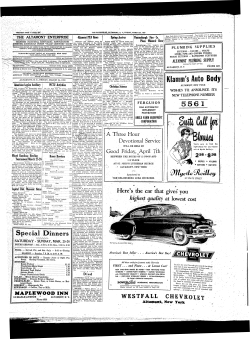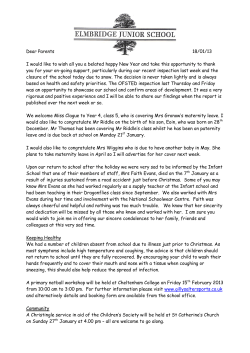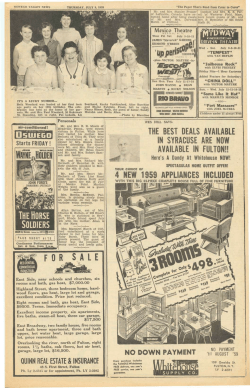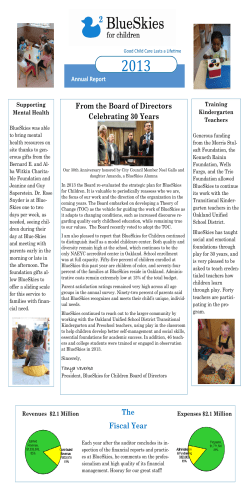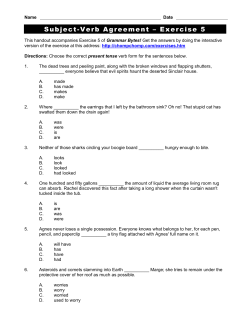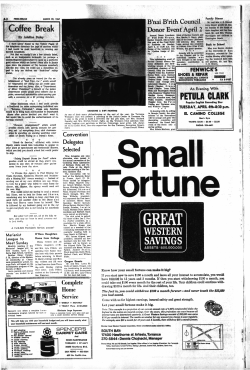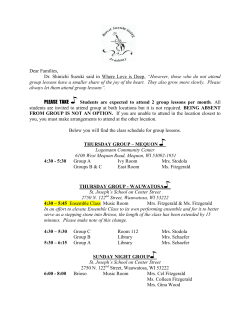
BEETHOVEN MOONLIGHT SONATA AND SYMPHONY NO.2
SEASON 2007 BEETHOVEN FESTIVAL TEA & SYMPHONY BEETHOVEN MOONLIGHT SONATA AND SYMPHONY NO.2 Friday 1 June | 11am Sydney Opera House Concert Hall Gianluigi Gelmetti conductor Gerhard Oppitz piano LUDWIG VAN BEETHOVEN (1770-1827) Sonata ‘quasi una fantasia’ in C sharp minor, Op.27 No.2 (Moonlight Sonata) Adagio sostenuto – Allegro – Trio Presto agitato Symphony No.2 in D, Op.36 Adagio molto – Allegro con brio Larghetto Scherzo (Allegro) and Trio Allegro molto Today’s performance of the Moonlight Sonata will be broadcast across Australia on ABC Classic FM 92.9 on Wednesday 13 June at 2.30pm. Symphony No.2 can be heard on Thursday 14 June at 8.00pm. Estimated timings: 16 minutes, 32 minutes. The performance will conclude at approximately 12.00pm. Cover images: see page 9 for captions Artist biographies begin on page 8 3 | Sydney Symphony ABOUT THE MUSIC BEETHOVEN Moonlight Sonata In November 1792 the 21-year-old Beethoven departed provincial Bonn for Vienna, to receive, in the words of Count Waldstein, ‘Mozart’s spirit from the hands of Haydn’. He arrived the inheritor of a musical language and symphonic style that was rapidly changing. An 18th-century musician could claim a common musical language, but the gradual emergence in the 19th century of independent composers as free professionals resulted in a scuffle for novelty, for the establishment of a personal idiom. The implications were profound and have been sustained into our own century. First, in the absence of a common idiom sheer facility was compromised – where Mozart might have written three symphonies in as many months, Beethoven could easily wrestle for years on just one work. More important, it quickly became apparent that novelty brings with it difficulties for the performer and increases demands on the listener – a composer could easily move too far ahead of public taste and understanding. Beethoven quickly found fame as a pianist, particularly as an improviser, and enjoyed strong support from Vienna’s aristocratic circles, willing to cultivate an innovative composer who matched their romantic aspirations. The first of his patrons was Prince Karl Lichnowsky, whose palace was an important venue for music-making. For much of the 1790s the palace could boast Beethoven as a leading, resident attraction. It was here, and for the Prince, that Beethoven completed his Opus 1 piano trios (1793) – the first important pieces of his musical maturity. It was a further five years before Beethoven presented his first symphony to the public. Meanwhile he won hearts with chamber works and his own dynamic personality as a performer. The intervening chamber works and piano sonatas were often symphonic in conception and the first two piano concertos show Beethoven grappling with orchestral forces as well as displaying his virtuosity. Beethoven was not writing symphonies, but nor was he wasting his time. Beethoven was in his element at the piano. A virtuoso capable of holding his own in fashionable and highly publicised piano duels, he was renowned for his improvisations. Freedom of thought and structural inventiveness were all possible in the improvised free 4 | Sydney Symphony Ludwig van Beethoven, 1800 – a piano virtuoso renowned for his improvisations fantasia. When Beethoven wished to adopt a particularly original guise in one of his piano sonatas it made sense to dub it a Sonata ‘quasi una fantasia’ (in the style of a fantasia), as he did in his popular but unorthodox ‘Moonlight’ Sonata. In 1801 it was still relatively unusual to provide pedalling instructions in piano music, so Beethoven’s instructions for the Moonlight Sonata are especially striking, the Italian translates as ‘this whole piece must be played very delicately and without dampers’. In other words, we are told that the dampers are to be raised for the entire movement (The equivalent of leaving one’s foot on the ‘loud pedal’.) Beethoven’s intent is a blurred sound, as the reverberations of undamped harmonies overlap. The effect could be described as ‘impressionist’. One of Vienna’s leading piano builders thrilled to this exotic effect: ‘Now in pianissimo, through [the raising of the dampers] he creates the most tender tone of the glass harmonica. How pure, how like a flute, the treble notes sound while the left hand plays consonant chords against them! How full the sound of the bass which is played with elastic lightness!’ With these words Andreas Streicher could almost have been describing the first movement of Beethoven’s Moonlight Sonata, completed in the same year. While this first movement conforms to all the thematic and harmonic requirements of sonata form, the homogeneity of texture, unfolding from an undulating triplet accompaniment figure, diverts our attention from the tensions and drama of the sonata principle and instead emphasises the floating tranquillity of this nocturnal fantasia. This is Chopin circa 1801. From this uncharacteristically slow and delicate first movement Beethoven moves headlong into a jewel-like scherzo and then a restless and powerful finale, the ‘real’ sonata movement placed last. If the Moonlight Sonata shows the 30-year-old Beethoven at his most fantastic, throwing conservative models to the wind, the Second Symphony, like the First, gives an impression of caution. Its composition coincides with Beethoven’s growing realisation that his deafness was both worsening and irreversible, and the poignant Heiligenstadt Testament, dated 2 October 1802, was written not long after. YVONNE FRINDLE ©2001 5 | Sydney Symphony …the floating tranquility of this nocturnal fantasia. BEETHOVEN Second Symphony Beethoven spent the summer of 1802 at Heiligenstadt, in those days a small village in the countryside but now a suburb of Vienna. Like many composers, Beethoven liked to withdraw to the country to concentrate on his work in peaceful surroundings, but this year there was an additional purpose: the deafness which had become noticeable in the previous years was now becoming serious, and the composer’s physician suggested a prolonged period away from the potentially damaging noise of the city. As he was preparing to return to Vienna in October 1802, Beethoven wrote a curious document that was found among his papers after his death. Now known as the ‘Heiligenstadt Testament’, it was a kind of will, addressed to the composer’s two brothers (though Beethoven only refers to one by name and the other by a blank space in the manuscript). In it, Beethoven expresses his anguish about his condition: what humiliation when someone stood beside me and heard a flute in the distance and I heard nothing, or heard the shepherd singing and again I heard nothing. Such incidents brought me to the verge of despair, but little more and I would have put an end to my life – only my art held me back. The saving art at this time included a number of violin sonatas, piano sonatas and bagatelles and the Second Symphony, which Beethoven completed during his stay at Heiligenstadt. It is difficult to find evidence of a composer in deep despair in this work, however, reminding us of the complex relationship between the life and work of any artist. But there is a nice symmetry at work. The Second might be seen as a leave-taking of the pastoral/classical tradition in favour of the more ‘heroic’ style of the middle period music, but it is Heiligenstadt which Beethoven portrayed in a work which marked his victory over fate some years later: the Pastoral Symphony. Beethoven’s First Symphony had been greeted as an honourable, if not always elegant, contribution to the tradition of Haydn and Mozart. To a modern listener, the Second seems a more assured but still essentially ‘Classical’ work. Like Haydn, Beethoven generates tense expectation in the first movement by using a slow introduction (and the great scholar Tovey has shown that 6 | Sydney Symphony Ludwig van Beethoven, 1802 – his deafness was becoming serious Beethoven borrows a specific sequence of chords from Haydn’s Creation in this work). Some hints of the mature Beethoven are in evidence, such as the breathtakingly simple means by which he extends the scale of the first movement with its lengthy concluding section or coda. The Larghetto is one of Beethoven’s most serene, pastoral slow movements, and for the first time in an orchestral work he uses the term scherzo (Italian for ‘joke’ – and it is genuinely funny) for the dance-like third movement. The finale juggles wit and seriousness in a way that is worthy of, but never sounds like, Haydn. For one thing, the movement, balancing the first, is broad in scale and has an extended coda. Beethoven’s orchestral music to date includes the first three of his piano concertos, but, as one commentator has suggested, in this work he fully engages with the orchestra for the first time. While we hear a piece of wonderfully crafted Classical music, contemporary critics were not so sure. After the first performance (which also included the premieres of the Third Piano Concerto and the oratorio Christ on the Mount of Olives) one praised the work’s ‘new and original ideas’. Some years later, however, a colleague famously described the finale as ‘a repulsive monster, a wounded tail-lashing serpent, dealing wild and furious blows as it stiffens into its death agony’, referring, perhaps, to the extended coda (Italian for ‘tail’). He hadn’t, as they say, heard nothing yet! While we hear a piece of wonderfully crafted Classical music, contemporary critics were not so sure. GORDON KERRY © 2004 Beethoven’s Second Symphony calls for pairs of flutes, oboes, clarinets, bassoons, horns and trumpets; timpani and strings. The Sydney Symphony first performed the Second Symphony in 1940 under Georg Schneevoigt, and most recently in the 2001 Beethoven Experience, conducted by Edo de Waart. What’s on the cover GOVERNMENT SUPPORT During the 2007 season Sydney Symphony program covers will feature photos that celebrate the Orchestra’s history over the past 75 years. The photographs on the covers will change approximately once a month, and if you subscribe to one of our concert series you will be able to collect a set over the course of the year. (clockwise from top left): Couple looking at an SSO Youth Concerts brochure, 1960s; Gianluigi Gelmetti; Edo de Waart’s farewell gala concert, November 2003; Proms audience playing penny whistles in McCabe’s Mini Concerto for organ, orchestra and 485 penny whistles (17 February 1968); Cliff Goodchild, former Principal Tuba, early 1960s; 75 Years of Inspiring Music; Dene Olding, Co-Concertmaster; Diana Doherty, Principal Oboe COVER PHOTOGRAPHS 7 | Sydney Symphony The Sydney Symphony is assisted by the Australian Government through the Australia Council and by the NSW Ministry for the Arts. THE ARTISTS Gianluigi Gelmetti CHIEF CONDUCTOR AND ARTISTIC DIRECTOR Gianluigi Gelmetti, Chief Conductor and Artistic Director of the Sydney Symphony, studied with Sergiu Celibidache, Franco Ferrara and Hans Swarowsky. For ten years he conducted the Stuttgart Radio Symphony Orchestra; he has conducted many of the leading orchestras in the world and appears regularly at international festivals. Since 2000 he has been Music Director of the Teatro dell’Opera di Roma. Highlights of past seasons include engagements in France, Germany, Great Britain, America, Australia, Japan, Switzerland and Italy, where he conducted Mascagni’s Iris and Respighi’s La fiamma at the Teatro dell’Opera di Roma and William Tell at the Rossini Opera Festival. In 1999 he was awarded the Rossini d’Oro Prize. Gianluigi Gelmetti has also worked regularly at the Royal Opera House, Covent Garden. His interpretation of Mozart’s The Marriage of Figaro earned him the title Best Conductor of the Year from the German magazine Opernwelt, and in 1997 he won the Tokyo critics’ prize for the best performance of the year of Beethoven’s Symphony No.9. He has been honoured as Chevalier de l’Ordre des Arts et des Lettres in France and Grande Ufficiale della Repubblica Italiana in Italy. Gianluigi Gelmetti’s recording catalogue includes operas by Salieri, Rossini, Puccini and Mozart, the complete orchestral music of Ravel, the late symphonies of Mozart and works by many 20th-century composers, including Stravinsky, Berg, Webern, Varèse and Rota. Among his recent recordings are William Tell, Iris, La fiamma, Bruckner’s Symphony No.6 and Rossini’s Stabat Mater. Gianluigi Gelmetti is also a composer; his recent works include In Paradisum Deducant Te Angeli, written to commemorate the tenth anniversary of Franco Ferrara’s death, Algos, and Prasanta Atma, in memory of Sergiu Celibidache. Since summer 1997 he has been teaching at the Accademia Chigiana in Siena. 8 | Sydney Symphony Gerhard Oppitz piano Gerhard Oppitz gives about 80 recitals and concerto performances a year, appearing with the world’s leading orchestras including the Berlin, Vienna, London, Israel and Royal Philharmonic Orchestras, the Philadelphia and Cleveland Orchestras, the Boston, Pittsburgh, and London Symphony Orchestras, and the Bavarian Radio Symphony Orchestra, with conductors such as Carlo Maria Giulini, Wolfgang Sawallisch, Riccardo Muti, Lorin Maazel, Dmitrij Kitajenko, Zubin Mehta, Herbert Blomstedt, Kent Nagano, Kurt Masur and Sir Neville Marriner. He frequently programs performances of complete piano cycles, including Schubert’s solo piano music, Beethoven and Mozart sonatas, Bach’s Well-Tempered Clavier, and Grieg’s solo works, as well as Brahms cycles in most of the major cities of Europe and in Tokyo. He has recorded the Beethoven piano concertos with the Leipzig Gewandhaus Orchestra and Marek Janowski, and his extensive discography also includes the complete solo piano works of Brahms and the two Brahms concertos with Sir Colin Davis. He has also recorded the complete solo piano works of Grieg, the concertante works of Carl Maria von Weber, and most recently the 32 Beethoven sonatas. Gerhard Oppitz was born in Frauenau (Bavaria) in 1953 and began playing the piano at the age of five. He gave his first public concert at 11, performing Mozart’s Concerto in D minor. In 1973 he met Wilhelm Kempff, who soon became his guide and mentor. In 1977 he became the first, and to date the only, German to win the coveted First Prize of the Artur Rubinstein Competition in Tel Aviv. This achievement and quasipolitical event led to concert tours across Europe, Asia and the USA. In addition to his busy performing and recording schedule, Gerhard Oppitz has a broad spectrum of interests: he is a qualified professional air pilot and frequently flies himself to concert engagements across Europe; he is an informed gourmet and a connoisseur of fine wines; and he speaks seven languages. His most recent appearances for the Sydney Symphony were in 2006, when he played Brahms’ Second Piano Concerto and a recital of Beethoven and Schubert. 9 | Sydney Symphony Gerhard Oppitz presents a recital of Beethoven sonatas including the Appassionata on Monday 18 June at 8pm and will perform in the Mozart in the City series on Thursday 14 June at 7pm. Both concerts are at the City Recital Hall Angel Place. Call the Sydney Symphony on 8215 4600 for tickets. SALUTE PRINCIPAL PARTNER GOVERNMENT PARTNERS The Company is assisted by the NSW Government through Arts NSW PLATINUM PARTNER MAJOR PARTNERS GOLD PARTNERS SILVER PARTNERS REGIONAL TOUR PARTNERS BRONZE PARTNERS Australia Post Beyond Technology Consulting Bimbadgen Estate Wines Goldman Sachs JBWere 10 | Sydney Symphony MARKETING PARTNERS J. Boag & Son Q-Med (Sweden) Australia Pty Ltd. Vittoria Coffee Avant Card Blue Arc Group Lindsay Yates & Partners 2MBS 102.5 – Sydney’s Fine Music Station PLAYING YOUR PART The Sydney Symphony gratefully acknowledges the music lovers who donate to the Orchestra each year. Every gift plays an important part in ensuring our continued artistic excellence and helping to sustain important education and regional touring programs. Because we are now offering free programs and space is limited we are unable to list donors who give between $100 and $499 – please visit sydneysymphony.com for a list of all our patrons. Patron Annual Donations Levels Maestri $10,000 and above Virtuosi $5000 to $9999 Soli $2500 to $4999 Tutti $1000 to $2499 Supporters $500 to $999 To discuss giving opportunities, please call Caroline Mark on (02) 8215 4619. Maestri Brian Abel & the late Ben Gannon AO ° Geoff & Vicki Ainsworth * Mr Robert O Albert AO * ‡ Alan & Christine Bishop ° § Sandra & Neil Burns * Mr Ian & Mrs Jennifer Burton ° The Clitheroe Foundation * Patricia M. Dixson * Penny Edwards ° * Mr J O Fairfax AO * Dr Bruno & Mrs Rhonda Giuffre * Mr Harcourt Gough § Mr David Greatorex AO & Mrs Deirdre Greatorex § Mr Andrew Kaldor & Mrs Renata Kaldor AO § H. Kallinikos Pty Ltd § Mr David Maloney § Mr B G O’Conor § The Paramor Family * Mr Paul & Mrs Sandra Salteri Mrs Joyce Sproat & Mrs Janet Cooke Mr Brian & Mrs Rosemary White Anonymous (1) * Virtuosi Mrs Antoinette Albert § Mr Robert & Mrs L Alison Carr § Mr John C Conde AO § Mr John Curtis § Irwin Imhof in Memory of Herta Imhof ° ‡ Mr Stephen Johns § Mr & Mrs Gilles T Kryger ° § Helen Lynch AM ° Mr E J Merewether & Mrs T Merewether OAM * Miss Rosemary Pryor * Bruce & Joy Reid Foundation * John Roarty in memory of June Roarty 11 | Sydney Symphony Rodney Rosenblum AM & Sylvia Rosenblum § Mrs Helen Selle § Dr James Smith § David Smithers AM & family § Michael & Mary Whelan Trust § Anonymous (2) § Soli Ms Jan Bowen * Mr Chum Darvall § Ian Dickson & Reg Holloway * Hilmer Family Trust § Mr Paul & Mrs Susan Hotz ° § Mr Rory Jeffes Paul Lancaster & Raema Prowse ° § Mrs Joan MacKenzie § Mr James & Mrs Elsie Moore ° Ms Kathleen Parer Ms Gabrielle Trainor Mr R Wingate § Anonymous (2) § Tutti Mr C R Adamson ° § Mr Henry W Aram § Mr David Barnes ° Mrs F M Buckle ° Debby Cramer & Bill Caukill ° Libby Christie & Peter James Mr Bob & Mrs Julie Clampett § Mr & Mrs J B Fairfax AM § Mr Ian Fenwicke & Prof Neville Wills § Mrs Dorit & Mr William Franken ° § Mr & Mrs J R W Furber § Mr Arshak & Ms Sophie Galstaun § In Memory of Hetty Gordon § Mrs Akiko Gregory § Miss Janette Hamilton ° ‡ Mr A & Mrs L Heyko-Porebski ° Dr Paul Hutchins & Ms Margaret Moore ° Mrs Margaret Jack Mr John W Kaldor AM § Mr & Mrs E Katz § Mr Andrew Korda & Ms Susan Pearson § Mr Justin Lam § Mr Gary Linnane § Ms Karen Loblay § Mr & Mrs R. Maple-Brown § Mrs Alexandra Martin & the late Mr Lloyd Martin AM § Justice Jane Mathews § Mrs Mora Maxwell ° § Judith McKernan ° Mrs Barbara McNulty OBE ° Mr & Mrs John Morschel Mr R A Oppen § Mr Robert Orrell § Dr Timothy Pascoe § Ms Robin Potter § Mr Nigel Price § Mr & Mrs Ernest Rapee § Mrs Patricia H Reid ° Mr Brian Russell & Ms Irina Singleman Gordon & Jacqueline Samuels ° § Ms Juliana Schaeffer § Robyn Smiles § Derek & Patricia Smith § Catherine Stephen ° Mr Fred & Mrs Dorothy Street § Mr Georges & Mrs Marliese Teitler § Mr Stephen Thatcher Mr Ken Tribe AC & Mrs Joan Tribe ° Mr John E Tuckey ° Mrs Kathleen Tutton ° Ms Mary Vallentine AO § Henry & Ruth Weinberg § Mr & Mrs Bruce West Jill Wran § Mrs R Yabsley ° Anonymous (10) § Supporters over $500 Mr Roger Allen & Ms Maggie Gray Mr Lachlan Astle John Augustus ° Mr Warwick Bailey § Mr Marco Belgiorno-Zegna AM Mr G D Bolton ° Pat & Jenny Burnett ° Hon. Justice J C & Mrs Campbell * Mr & Mrs Michel-Henri Carriol ° Mrs B E Cary § Mr Leo Christie & Ms Marion Borgelt Mr Peter Coates Mr B & Mrs M Coles § Mrs Catherine Gaskin Cornberg § Stan & Mary Costigan * Mrs M A Coventry ° Ms Rowena Danziger ° Mr & Mrs Michael Darling Lisa & Miro Davis * Mrs Patricia Davis § Mrs Ashley Dawson-Damer Mr Paul Espie ° Mr Russell Farr Mr & Mrs David Feetham Mr Richard & Mrs Diana Fisher Rev H & Mrs M Herbert ° * Ms Michelle Hilton-Vernon Mr and Mrs Paul Holt Mr Eric C Howie ° Mr & Mrs P Huthnance ° Ms Judy Joye Mrs Jeannette King ° * Mrs J Lam-Po-Tang ° Dr Barry Landa Mrs Joan Langley ° Ms Jan Lee Martin & Mr Peter Lazar § Mr David & Mrs Skye Leckie Margaret Lederman ° Mr & Mrs Ezzelino Leonardi § Mr Bernard & Mrs Barbara Leser Erna & Gerry Levy AM * Mr and Mrs S C Lloyd ° Mr Andrew & Mrs Amanda Love Mr Matthew McInnes § Mr Tony & Mrs Fran Meagher Mr Andrew Nobbs Moon Design Mrs R H O’Conor Ms Patricia Payn § Mr Adrian & Mrs Dairneen Pilton Mr & Mrs Michael Potts Mrs B Raghavan ° Mrs Caroline Ralphsmith Dr K D Reeve AM * Mr & Mrs A Rogers ° Dr Jane & Mr Neville Rowden § Mrs Margaret Sammut In memory of H St P Scarlett ° * Blue Mountain Concert Society Inc ° Mr Ezekiel Solomon Mr Andrew & Mrs Isolde Tornya Miss Amelia Trott Mrs Merle Turkington ° The Hon M. Turnbull MP & Mrs L. Hughes Turnbull Mr & Mrs Franc Vaccher Ronald Walledge ° Louise Walsh & David Jordan Mr Geoff Wood and Ms Melissa Waites Miss Jenny Wu Mr Michael Skinner & Ms Sandra Yates AO Anonymous (12) ° * ‡ § Allegro Program supporter Emerging Artist Fund supporter Stuart Challender Fund supporter Orchestra Fund supporter Sydney Symphony Founded in 1932, the Sydney Symphony has evolved into one of the world’s finest orchestras as Sydney has become one of the world’s great cities. Resident at the Sydney Opera House, the Orchestra also performs throughout Sydney and regional New South Wales, and has toured internationally. Critical to the Orchestra’s success has been the leadership given by its former Chief Conductors, including Sir Eugene Goossens, Willem van Otterloo, Louis Frémaux, Sir Charles Mackerras, Stuart Challender and Edo de Waart, as well as collaborations with legendary figures such as George Szell, Sir Thomas Beecham, Otto Klemperer and Igor Stravinsky. Maestro Gianluigi Gelmetti is now in his fourth year as Chief Conductor and Artistic Director, a position he holds in tandem with that of Music Director at the prestigious Rome Opera. This year the Orchestra celebrates its 75th anniversary. FIRST VIOLINS VIOLAS Michael Dauth Concertmaster Kirsten Williams Assoc. Concertmaster Sun Yi Assoc. Concertmaster Fiona Ziegler Asst Concertmaster Dimity Hall Guest Principal Georges Lentz Sophie Cole Jennifer Hoy Martin Silverton* Alexandra Mitchell Emily Qin# Emily Long# Léone Ziegler Amber Davis Roger Benedict Yvette Goodchild Asst Principal Leon Volovelsky Robyn Brookfield Jennifer Curl# Felicity Wyithe Rosemary Curtin* Joanna Tobin† Sandro Costantino Vera Marcu* Jacqueline Cronin# Graham Hennings SECOND VIOLINS Marina Marsden Susan Dobbie Emma West Asst Principal Shuti Huang Maria Durek Nicole Masters Stan Kornel Alexander Norton# Maja Verunica Alexandra D’Elia# Biyana Rozenblit Thomas Dethlefs† Pieter Bersée Thomas Dundas* 12 | Sydney Symphony Lauren Brandon* Kirsty McCahon* David Cooper* FLUTES Emma Sholl Carolyn Harris OBOES Shefali Pryor Alexandre Oguey CLARINETS Frank Celata Craig Wernicke PATRON Her Excellency Professor Marie Bashir AO GOVERNOR OF NEW SOUTH WALES Gianluigi Gelmetti CHIEF CONDUCTOR AND ARTISTIC DIRECTOR SPONSORED BY EMIRATES John Conde AO CHAIRMAN Libby Christie MANAGING DIRECTOR SYDNEY OPERA HOUSE TRUST Mr Kim Williams AM (Chair) Mr John Ballard, Mr Wesley Enoch, Ms Renata Kaldor AO, Ms Jacqueline Kott, Mr Robert Leece AM RFD, Ms Sue Nattrass AO, Mr Leo Schofield AM, Ms Barbara Ward, Mr Evan Williams AM EXECUTIVE MANAGEMENT CHIEF EXECUTIVE Norman Gillespie DIRECTOR, FACILITIES Paul Akhurst DIRECTOR, FINANCE & SYSTEMS David Antaw DIRECTOR, MARKETING & DEVELOPMENT Naomi Grabel DIRECTOR, PERFORMING ARTS Rachel Healy CELLOS BASSOONS DIRECTOR, PEOPLE & CULTURE Joe Horacek Catherine Hewgill Leah Lynn David Wickham Adrian Wallis Minah Choe* Timothy Nankervis Fenella Gill Janine Ryan* Martin Penicka† Elizabeth Neville Rowena Crouch# Kristy Conrau Roger Brooke Fiona McNamara DIRECTOR, INFORMATION SYSTEMS Claire Swaffield HORNS Ben Jacks Euan Harvey** Daniel Mendelow John Foster SYDNEY OPERA HOUSE Bennelong Point GPO Box 4274 Sydney NSW 2001 Administration (02) 9250 7111 Box Office (02) 9250 7777 Facsimile (02) 9250 7666 Website sydneyoperahouse.com TIMPANI This is a Brian Nixon# Asst Principal publication. TRUMPETS DOUBLE BASSES Kees Boersma Alex Henery Neil Brawley Principal Emeritus David Campbell Steven Larson Richard Lynn David Murray DIRECTOR, TOURISM & VISITOR OPERATIONS Maria Sykes Key # Contract Musician * Guest Musician † Sydney Symphony Fellow ** Courtesy of the New Zealand Symphony Orchestra / SHOWBILL PUBLISHER Playbill Proprietary Limited / Showbill Proprietary Limited ACN 003 311 064 ABN 27 003 311 064 1017 Pacific Highway, Pymble 2073. Telephone: (02) 9449 6433 Fax: (02) 9449 6053 E-mail: admin@playbill.com.au Website: www.playbill.com.au Executive Chairman and Advertisement Director Brian Nebenzahl OAM, RFD Managing Director Michael Nebenzahl Editorial Director Jocelyn Nebenzahl Director – Production Chris Breeze 14815 – 1/010607 – 16TS S35
© Copyright 2024
